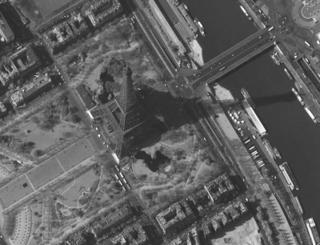
Top image: The newly discovered HUDF-JD2 galaxy, which would lie inside the circle, is not seen by telescopes reading visible light. Bottom image: Hubble's Near Infrared Camera and Multi-Object Spectrometer is able to "see" the young galaxy as a faint red spot.
New images reveal a "big baby" galaxy that may lie as far from the Earth as any galaxy yet discovered. Astronomers say the new galaxy is surprisingly massive and mature for its early age—raising questions about how galaxies are formedThe galaxy represents a time when the universe was just 800 million years old. Scientists place the universe's age at around 14 billion years.
The Birth of Galaxies
The universe's other young galaxies are generally much smaller. Scientists believe that many of these smaller galaxies gradually combined over time to build larger galaxies like the Milky Way.
But the new galaxy not only contains hundreds of billions of stars, it seems to have finished its star formation at a tender age.
"This galaxy, named HUDF-JD2, appears to have bulked up quickly, within the first few hundred million years after the big bang," said Bahram Mobasher of the Space Telescope Science Institute in Baltimore.
At the Edge of Observation
The HUDF-JD2 galaxy is located in a tiny patch of sky called the Hubble Ultra Deep Field.
No one knows for sure how far away the galaxy lies because the discovery is pushing the very limits of telescope technology.
Hubble cannot see the galaxy in visible light, but this non-observation may hold important information.
"The fact that we don't see it in the deepest optical images ever taken is one of the reasons we believe it's as old as it is," Dickinson explained.
As the universe expands, light is stretched and shifted to longer, redder wavelengths. The newfound galaxy's visual wavelengths appear to have been so reduced that they were absorbed by space hydrogen as they traveled the billions of light years toward Earth.
The galaxy was spotted via Hubble's infrared images and by an infrared camera on the Very Large Telescope at the European Southern Observatory.
Such state-of-the-art equipment enabled astronomers to discover the galaxy, but the big baby's exact distance will likely remain a mystery until the next generation of telescopes emerges.
No comments:
Post a Comment